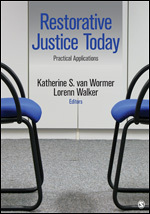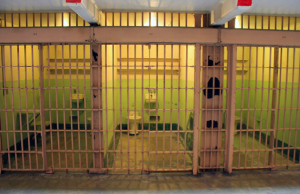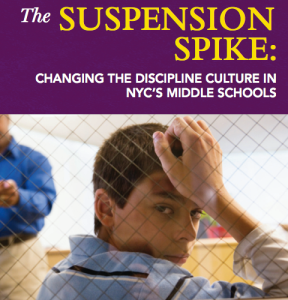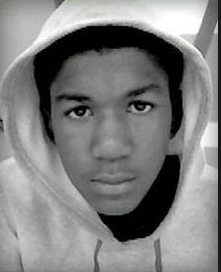News & Announcements
- Details
- Written by Joshua Wachtel
Here's a five-minute "teaser" for a forthcoming documentary from Teachers Unite titled Growing Fairness. The first part of the trailer offers a critique of the so-called school-to-prison pipeline and zero tolerance policies.
- Details
- Written by Joshua Wachtel
 Eric Assur at Restorative Justice Online has just posted a book review on Restorative Justice Today: Practical Applications, edited by Katherine S. van Wormer and Lorenn Walker. As I mentioned last fall, this book includes a chapter co-written by IIRP President Ted Wachtel and another written by IIRP Assistant Director for Communications Laura Mirsky.
Eric Assur at Restorative Justice Online has just posted a book review on Restorative Justice Today: Practical Applications, edited by Katherine S. van Wormer and Lorenn Walker. As I mentioned last fall, this book includes a chapter co-written by IIRP President Ted Wachtel and another written by IIRP Assistant Director for Communications Laura Mirsky.
Over the past thirty years the number of books or publications on Restorative Justice (R.J.) has increased annually. In 2013 justice practitioners, students and conflict resolution (or conflict prevention) readers may proclaim this publication as their book of the year. The authors, both with interesting backgrounds and academic credentials have provided a ‘practical’ look at the current applications for R.J. in the United States and elsewhere. Unlike most North American or United Kingdom anthologies with limited geographic focus this publication provides an impressive worldwide frame of reference. The words they use are well chosen and the entire collection of twenty five (25) articles by a well chosen collection of twenty nine listed authors is thoughtfully organized.
- Details
- Written by Joshua Wachtel
The following is the beginning of a piece by Rachel Barnard posted July 17 in Urban Omnibus titled "Young New Yorkers: Restorative Justice Through Public Art."
 The Young New Yorkers write their dreams on a paper airplane and give them flight to conclude the programThe wide-angle lens captures the flickering of a fan overhead and the outstretched leg of a small child sitting just out of frame. It is summer in New York and Isaiah’s grandmother is sitting on a quilted day bed that has been pushed up against a wooden partition and partially obstructs the entrance to her kitchen. Her left leg is neatly curled under her right; her left arm props herself up on the bed’s surface. Her head, framed by long braids, leans intently forward. She speaks directly into the camera her grandson is holding:
The Young New Yorkers write their dreams on a paper airplane and give them flight to conclude the programThe wide-angle lens captures the flickering of a fan overhead and the outstretched leg of a small child sitting just out of frame. It is summer in New York and Isaiah’s grandmother is sitting on a quilted day bed that has been pushed up against a wooden partition and partially obstructs the entrance to her kitchen. Her left leg is neatly curled under her right; her left arm props herself up on the bed’s surface. Her head, framed by long braids, leans intently forward. She speaks directly into the camera her grandson is holding:
I was sad because it's not like you committed a crime like you robbed someone, or you beat up someone, or you killed someone. It broke my heart that for such a minor offense you had to face the crime. Because it is a crime. Whether you do graffiti, whether you jump the turnstile, they are all crimes.
Isaiah is interviewing his grandmother as part of a homework assignment for Young New Yorkers, a restorative justice arts program for 16- and 17-year-olds with open criminal cases. The assignment asks Isaiah, and his fellow participants, to interview people important to them about the personal impact of their misconduct. Isaiah’s grandmother’s response is typical of a guardian or mentor, a combination of belief and encouragement coupled with utter frustration:
- Details
- Written by Joshua Wachtel
This beautifully animated short film walks through a Family Group Decision Making conference (FGDM, also known as a Family Group Conference) from the point of view of a mother at risk of losing her children.
Norwegian Directorate for Children, Youth and Family Affairs (Bufdir) is the Norwegian governmental office for the welfare and protection of children and families.
This video is also available in Norwegian and Russian.
Watch a similar video about family group conferences from a child's perspective.
Find information about IIRP's Family Power program.
- Details
- Written by Ted Wachtel
You may download a PDF of this article for your personal use.
This article is an excerpt from IIRP president and founder Ted Wachtel’s new book, Dreaming of a New Reality: How restorative practices reduce crime and violence, improve relationships and strengthen civil society, published by the International Institute for Restorative Practices, in association with the Piper’s Press. Through stories and statistics, the book demonstrates the promise of restorative practices to heal victims, prevent bullying, curb conflict, reduce school disciplinary problems and boost workplace satisfaction and productivity. It also outlines the history and development of this growing social movement, as well as a vision for its future.
- Details
- Written by Joshua Wachtel
 Photo by miss_millions at Flickr Creative Commons
Photo by miss_millions at Flickr Creative Commons
A few months ago I posted a piece about a report issued in the UK by Pat Nolan, director of Justice Fellowship, the criminal justice reform arm of Prison Fellowship International, about a shift in conservative thinking on crime in the US and a possible alliance between the right and the left on including restorative justice as a way to shift the current emphasis on prisons. Since the article was published in the UK and not here in the US, I put a question mark at the end of my post, which I titled "A shift in conservative American thinking on justice?"
But now a piece has appeared in the Wall Street Journal – indeed on the front page of the June 21, 2013 issue – titled "As Prisons Squeeze Budgets, GOP Rethinks Crime Focus" by Neil King, Jr., and it confirms something is afoot.
- Details
- Written by Joshua Wachtel
 On Tuesday, July 16, the New York City Comptroller's Office issued a report called “The Suspension Spike: Changing the Discipline Culture in NYC’s Middle Schools,” which "offers a blueprint for replacing the DOE’s failed zero-tolerance policy with restorative justice practices that help middle-school students stay in school and remain on the path to college and career readiness."
On Tuesday, July 16, the New York City Comptroller's Office issued a report called “The Suspension Spike: Changing the Discipline Culture in NYC’s Middle Schools,” which "offers a blueprint for replacing the DOE’s failed zero-tolerance policy with restorative justice practices that help middle-school students stay in school and remain on the path to college and career readiness."
According to a press release from the Comptroller's Office, "The report found that New York City middle schools suspended an average of 100 students a school day in the 2011-2012 school year. Almost all of those suspended were either black or Hispanic. It also found that middle-school students received 68 percent more suspensions than high-school students."
- Details
- Written by Joshua Wachtel
This 9-minute video from Leeds City Learning Centres in the UK gives a good overview of restorative practices use in the Carr Manor Community School. Many students, along with teachers and administrators, explain in their own words what restorative practices are, how they are used and what impact they have on the school environment.
Watch Carr Manor Restorative Practice on Vimeo.
Watch another film about Leeds' use of the "Family Learning Signature."
- Details
- Written by Joshua Wachtel
 Considering the national focus on the George Zimmerman murder trial, particularly over the past month during the trial and its conclusion with a "not guilty" verdict Saturday, this piece, "Restorative Justice for Trayvon Martin," seems particularly relevant. Written by Dr. Mikhail Lyubansky, a professor of psychology at the University of Illinois, Urbana-Champaign, and originally published in the Journal for Social Action in Counseling and Psychology, Volume 5, Number 1, Spring 2013, a "Special Issue on Violence against Individuals and Communities: Reflecting on the Trayvon Martin Case," this piece reflects on a variety of issues, including racism, the justice system, and the needs of communities for healing after a crime.
Considering the national focus on the George Zimmerman murder trial, particularly over the past month during the trial and its conclusion with a "not guilty" verdict Saturday, this piece, "Restorative Justice for Trayvon Martin," seems particularly relevant. Written by Dr. Mikhail Lyubansky, a professor of psychology at the University of Illinois, Urbana-Champaign, and originally published in the Journal for Social Action in Counseling and Psychology, Volume 5, Number 1, Spring 2013, a "Special Issue on Violence against Individuals and Communities: Reflecting on the Trayvon Martin Case," this piece reflects on a variety of issues, including racism, the justice system, and the needs of communities for healing after a crime.
- Details
- Written by Laura Mirsky
 Attorney and author Hazel Thompson-Ahye has long been deeply committed to reforming justice. Now it is her mission to implement restorative practices in her home country of Trinidad and Tobago, as well as other parts of the Caribbean.
Attorney and author Hazel Thompson-Ahye has long been deeply committed to reforming justice. Now it is her mission to implement restorative practices in her home country of Trinidad and Tobago, as well as other parts of the Caribbean.
After first hearing about restorative justice in 1999 from New Zealand prison chaplain, Father Jim Consedine, at a Penal Reform International conference in London, Thompson-Ahye was inspired to become involved in initiatives that attempted to bring restorative justice to Trinidad and the Bahamas.
Then in 2012 she read an article online from the IIRP about how restorative practices could help stop the school-to-prison pipeline and thought, “There’s a school teaching this? I have to go.”

Restorative Works Year in Review 2023 (PDF)
All our donors are acknowledged annually in Restorative Works.
